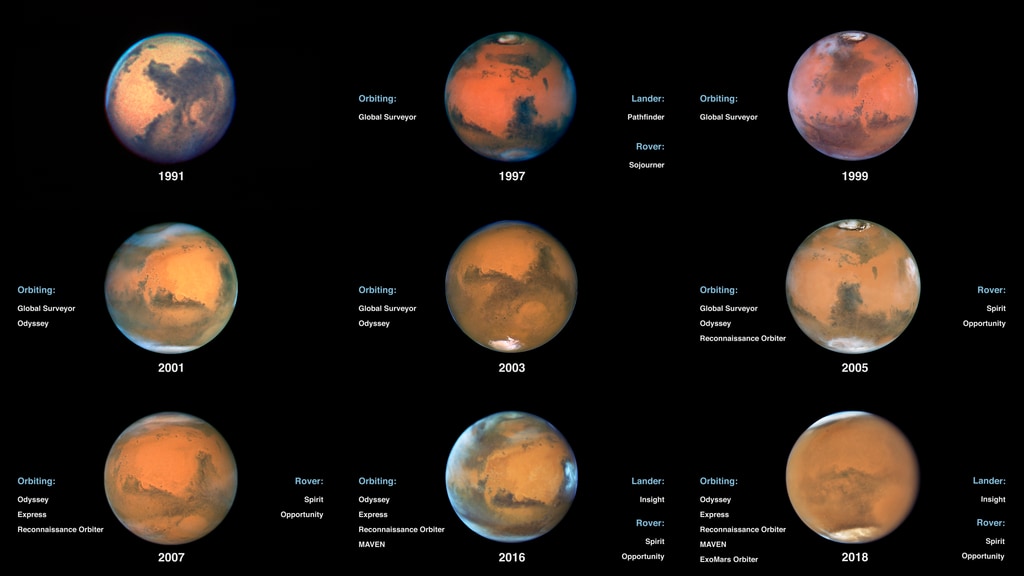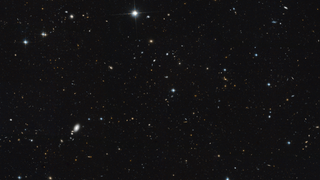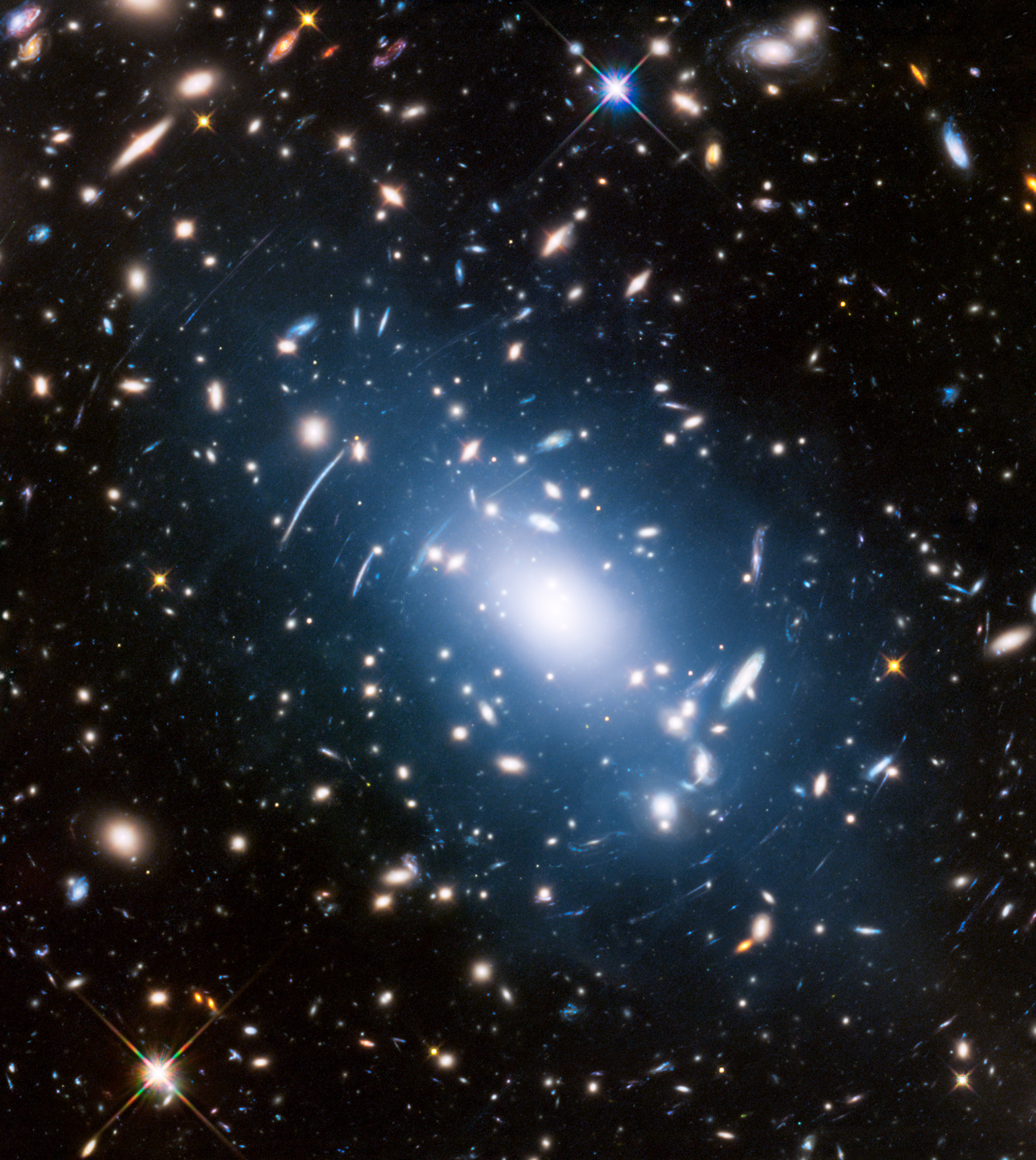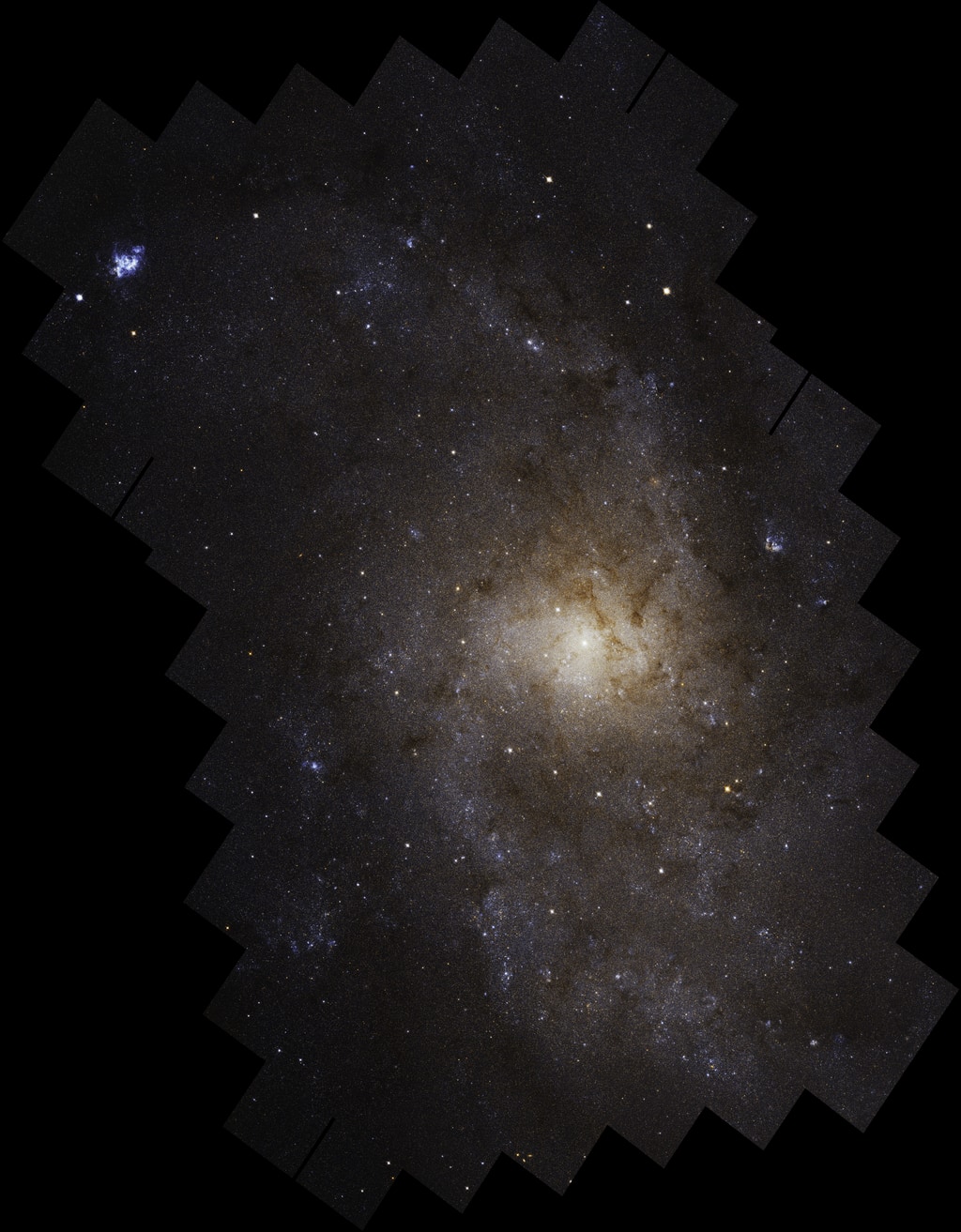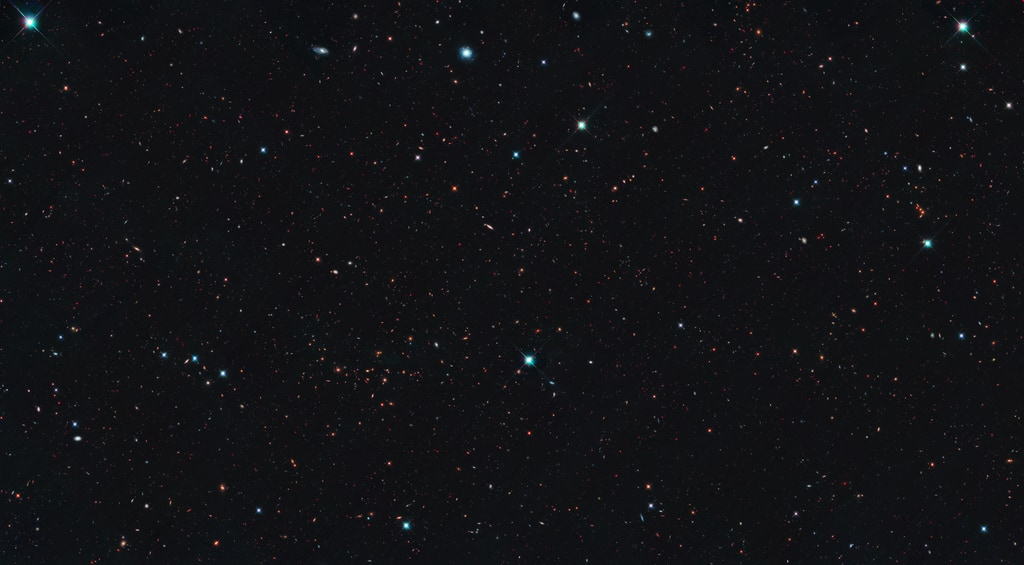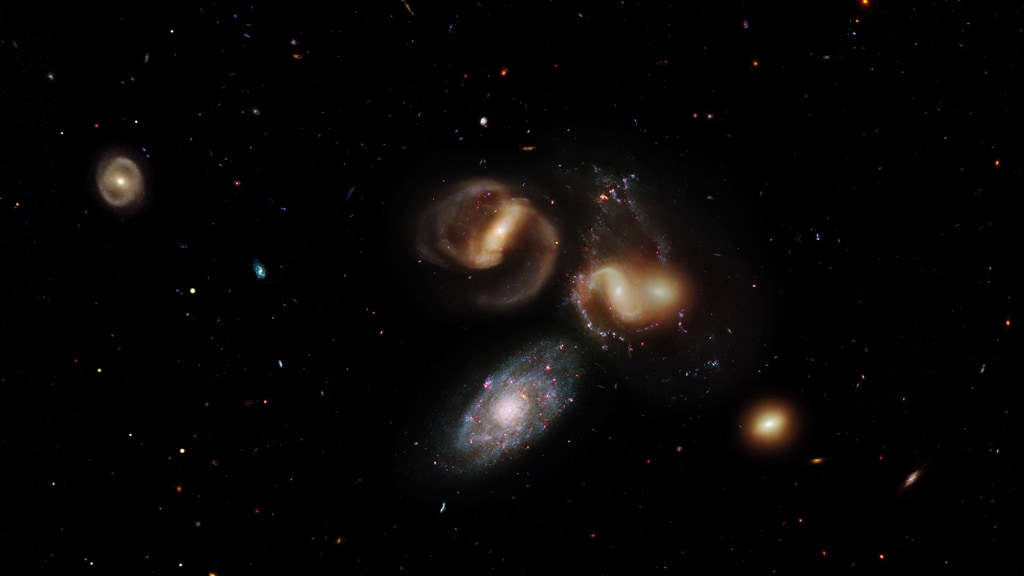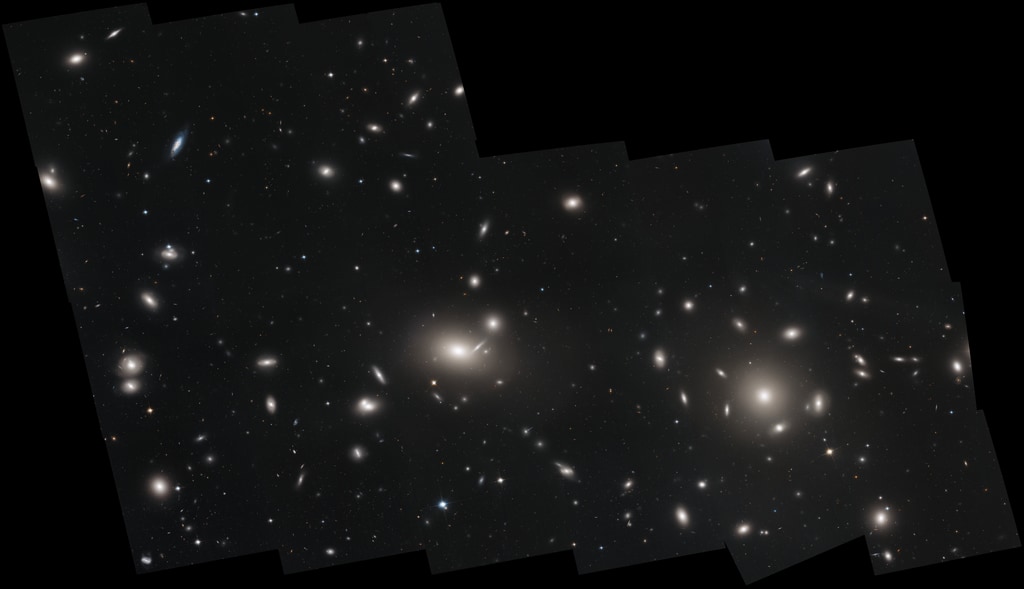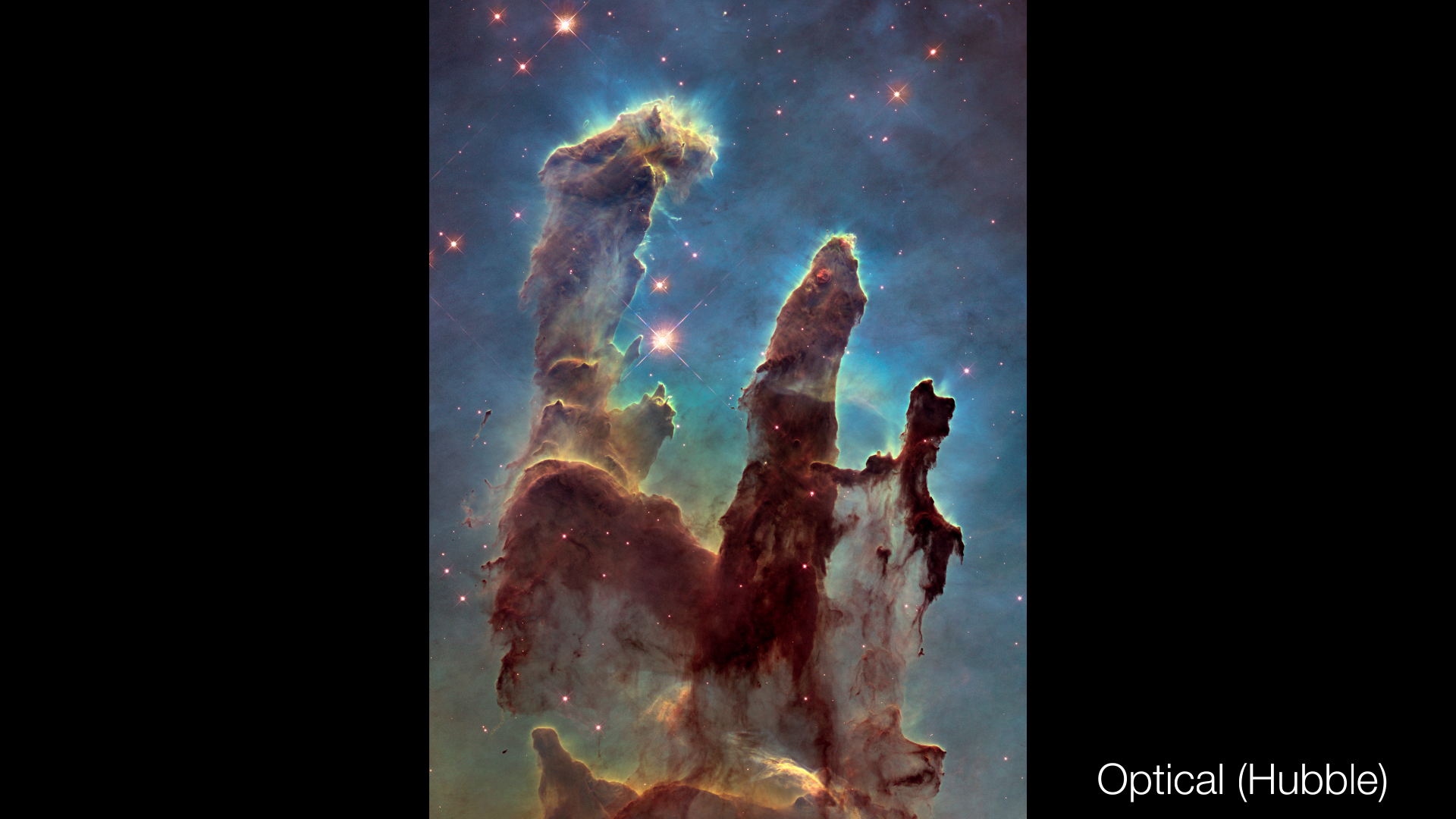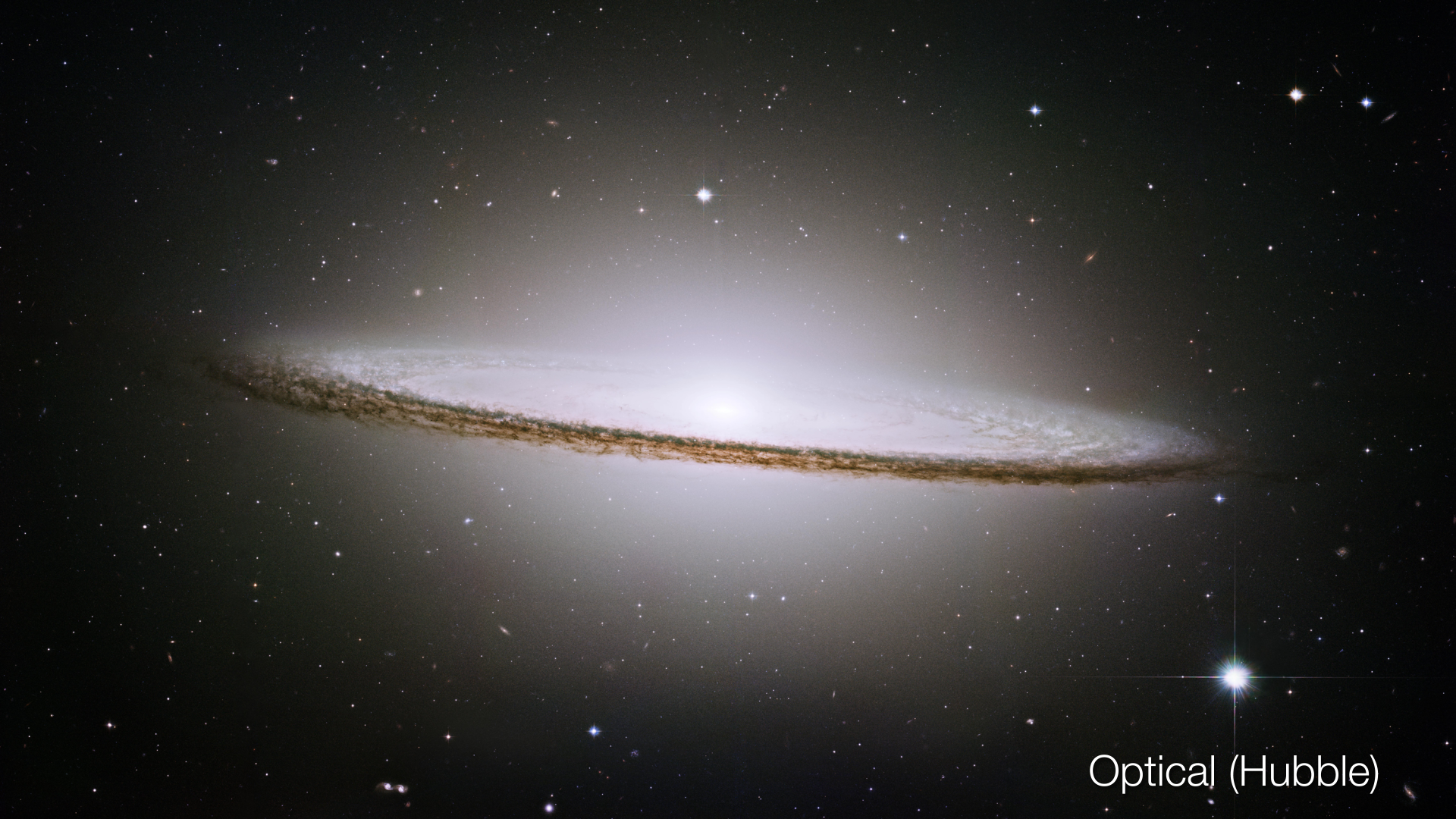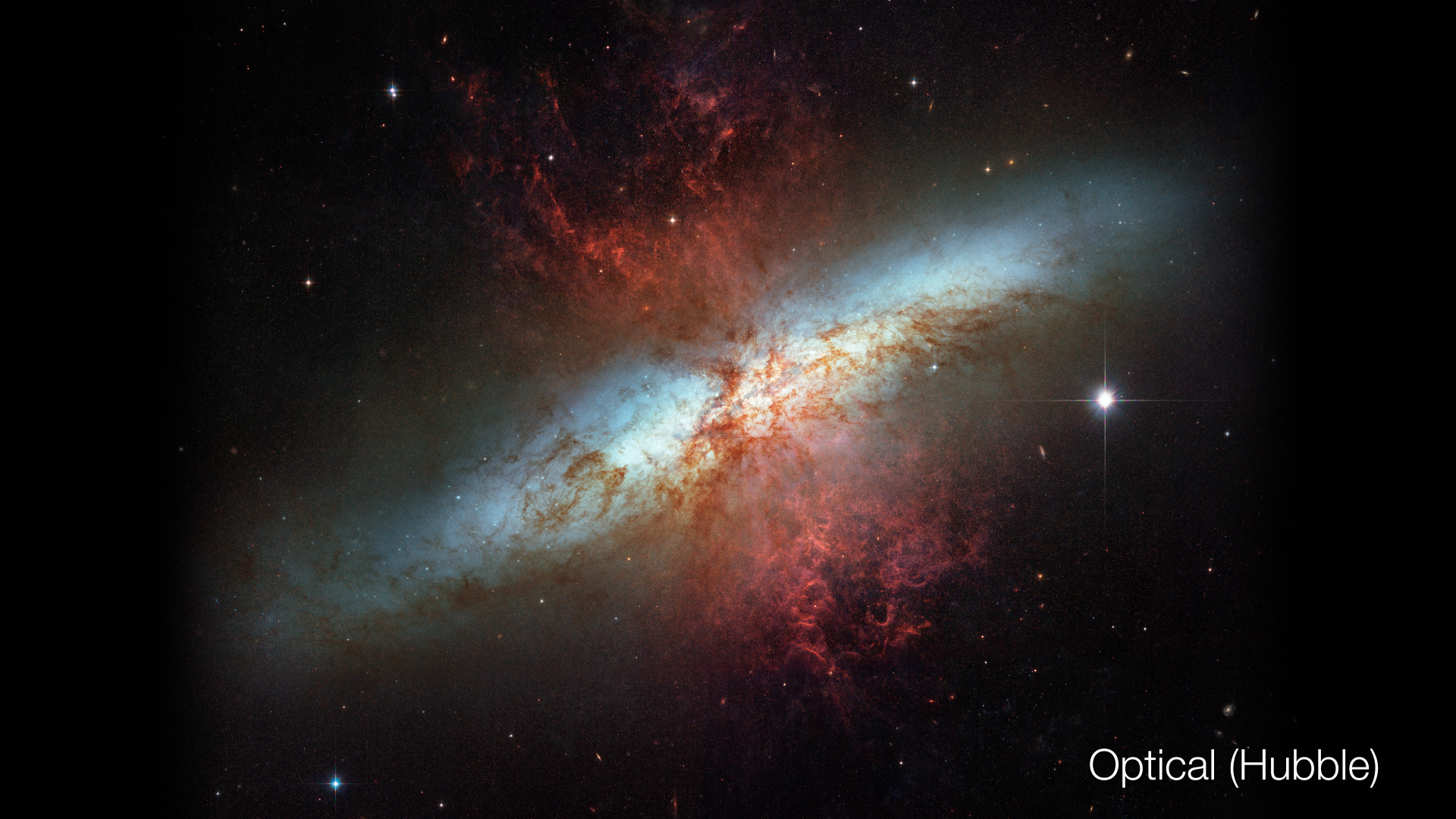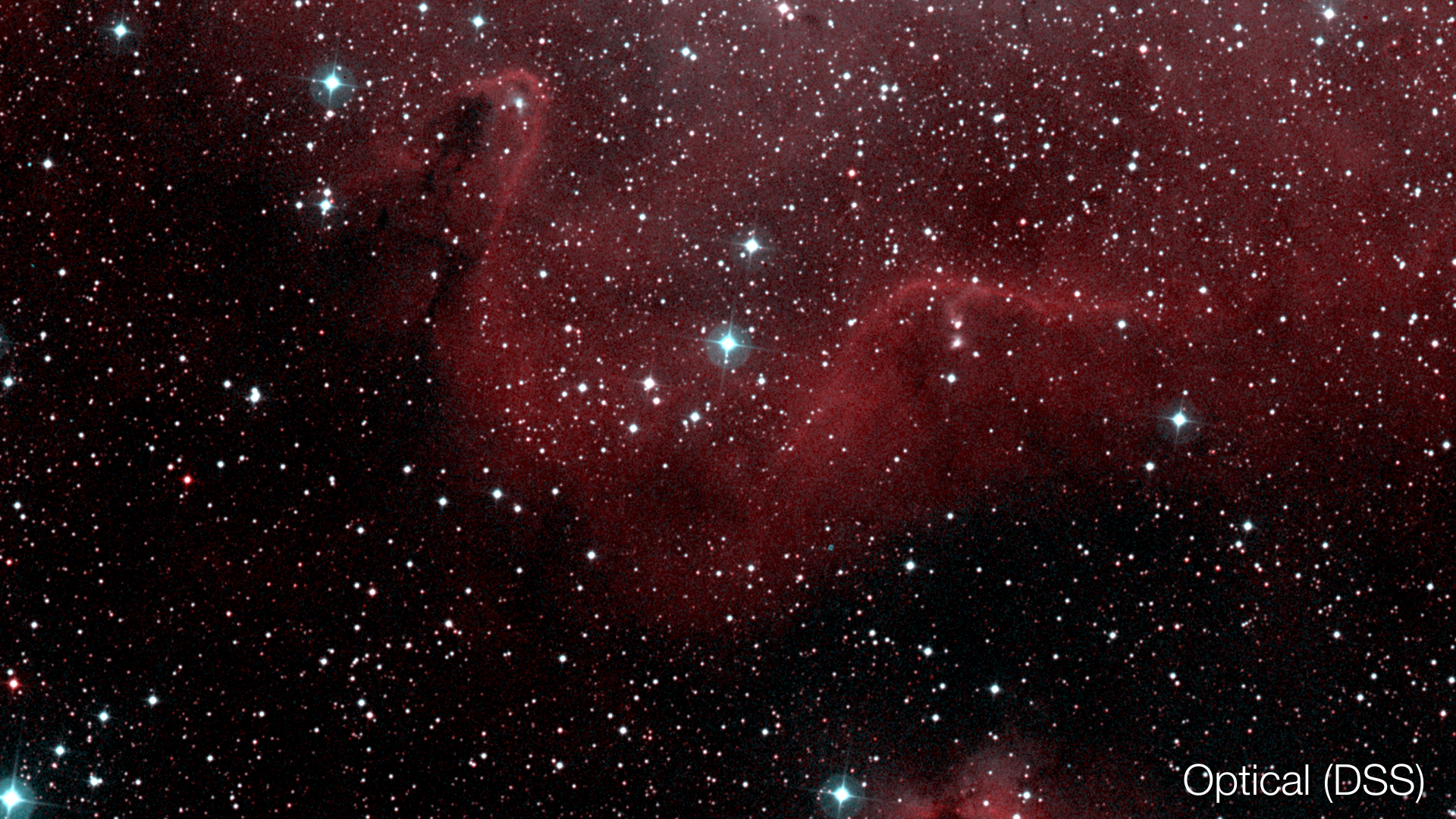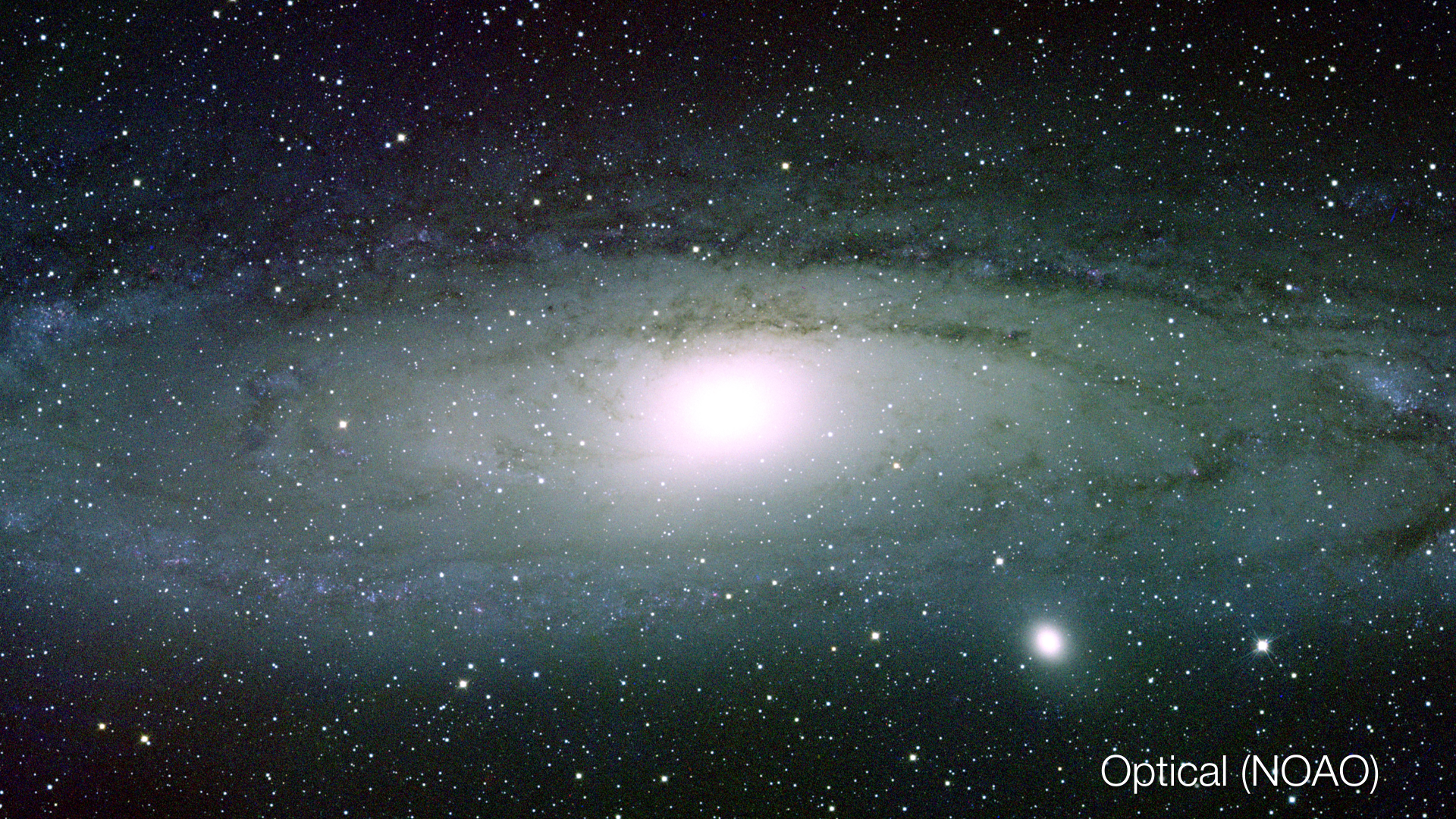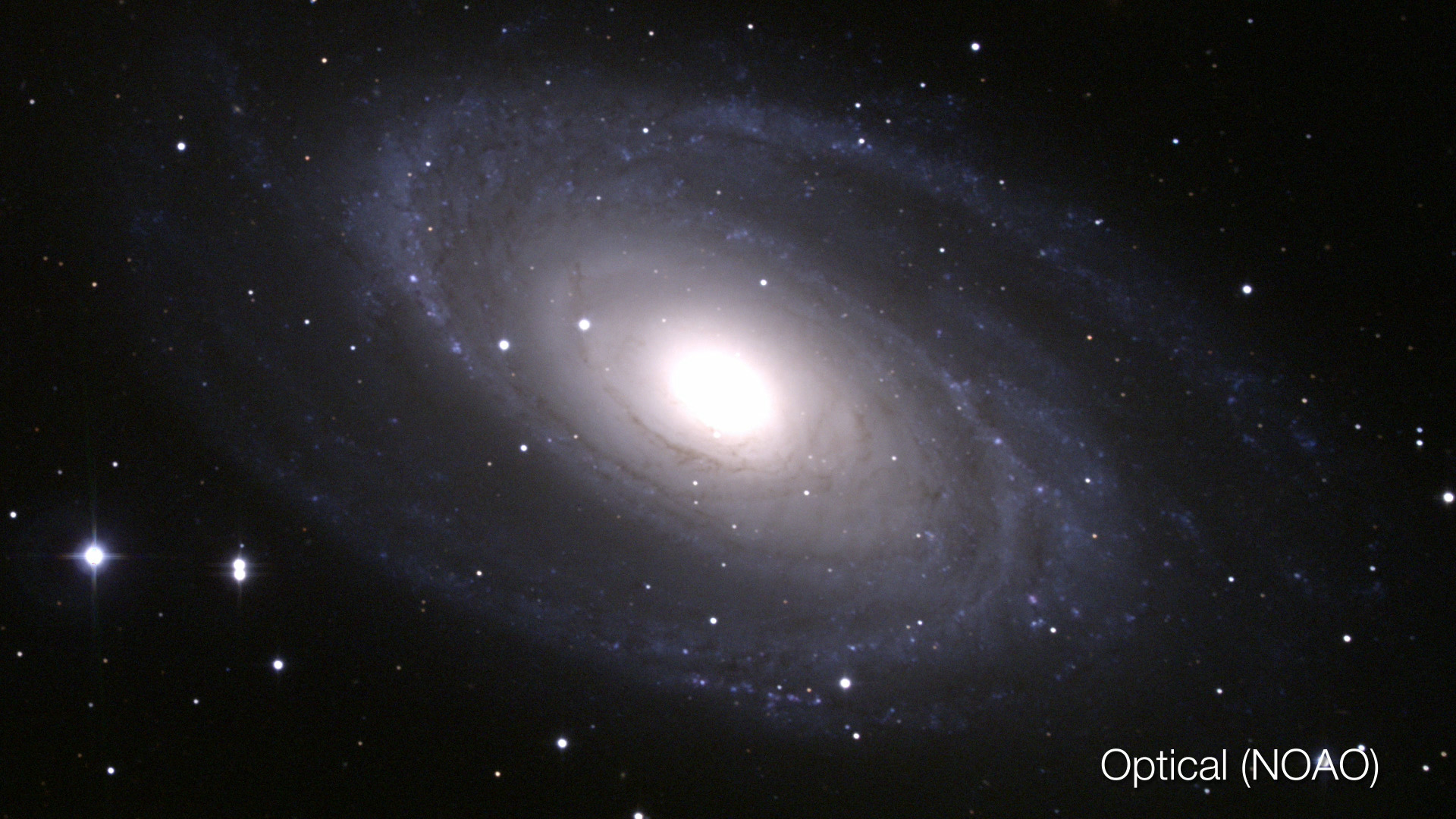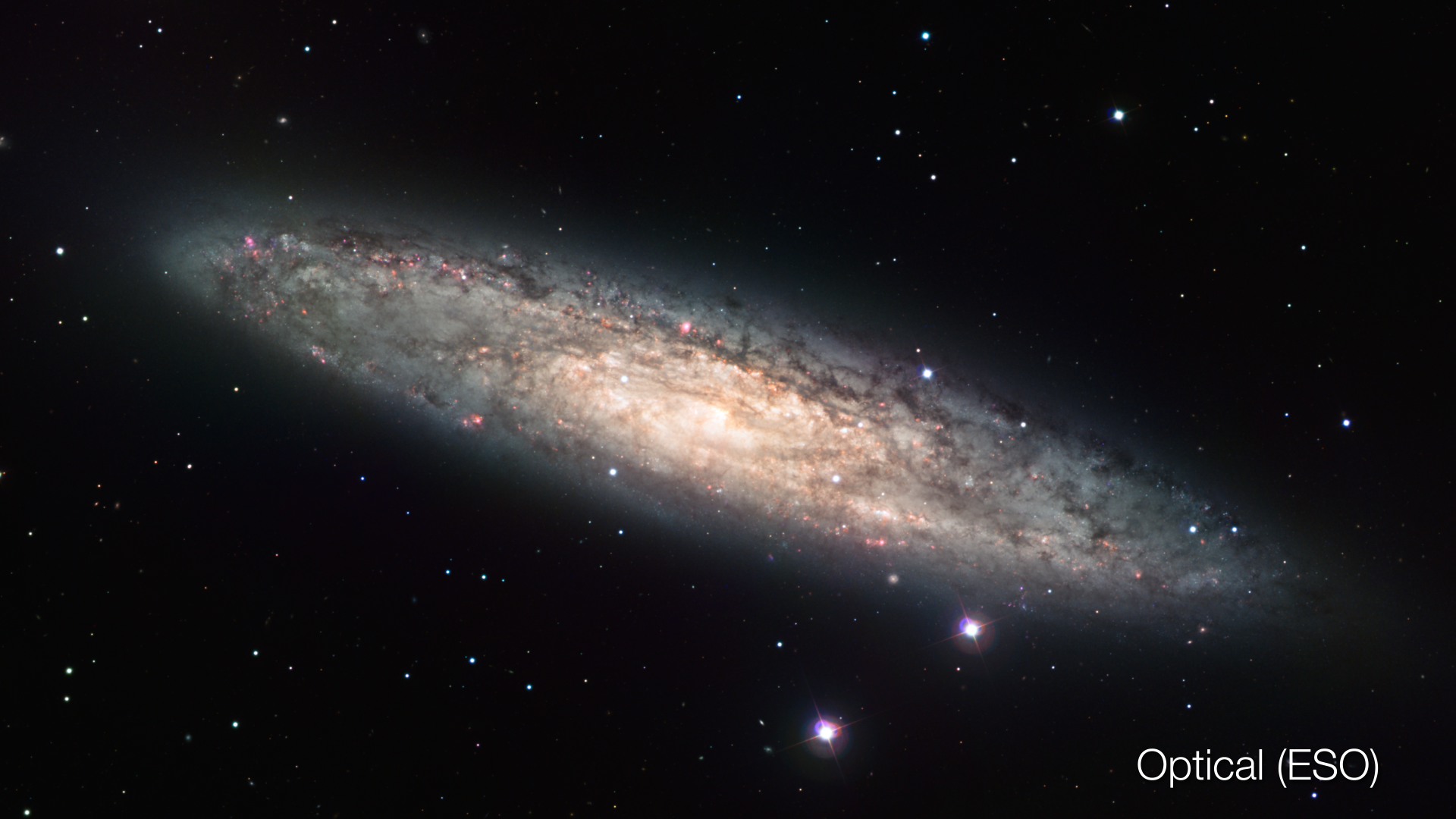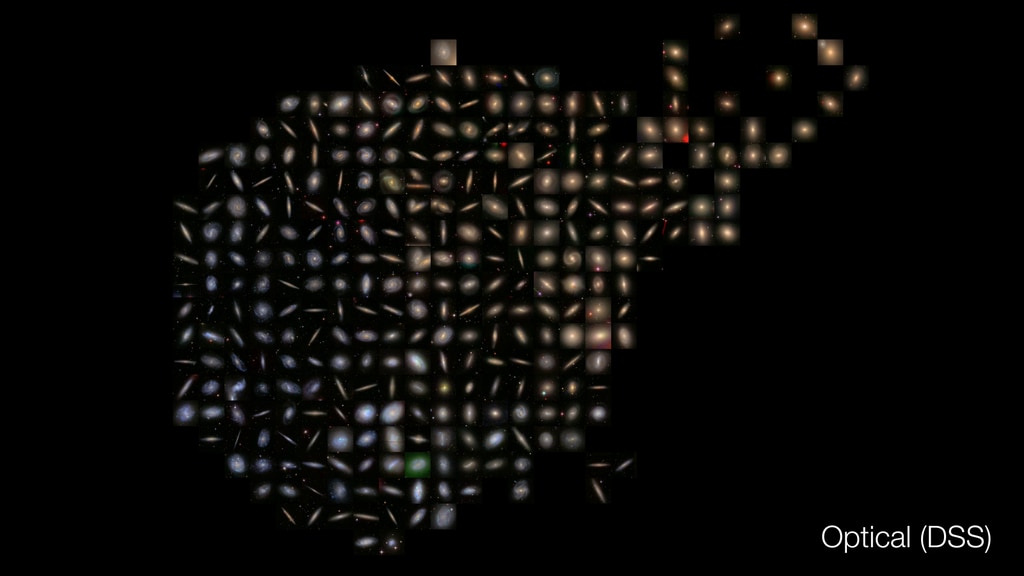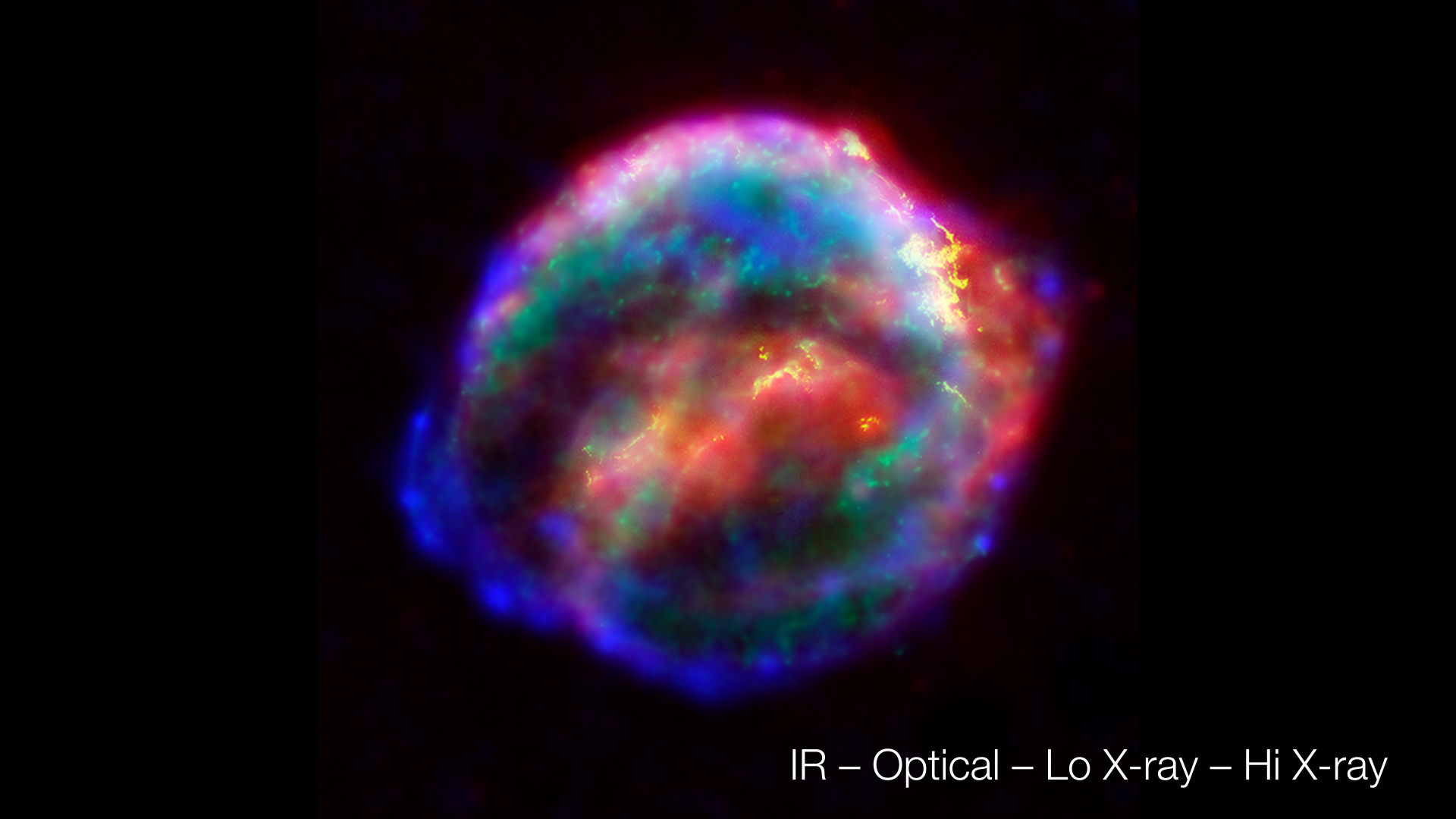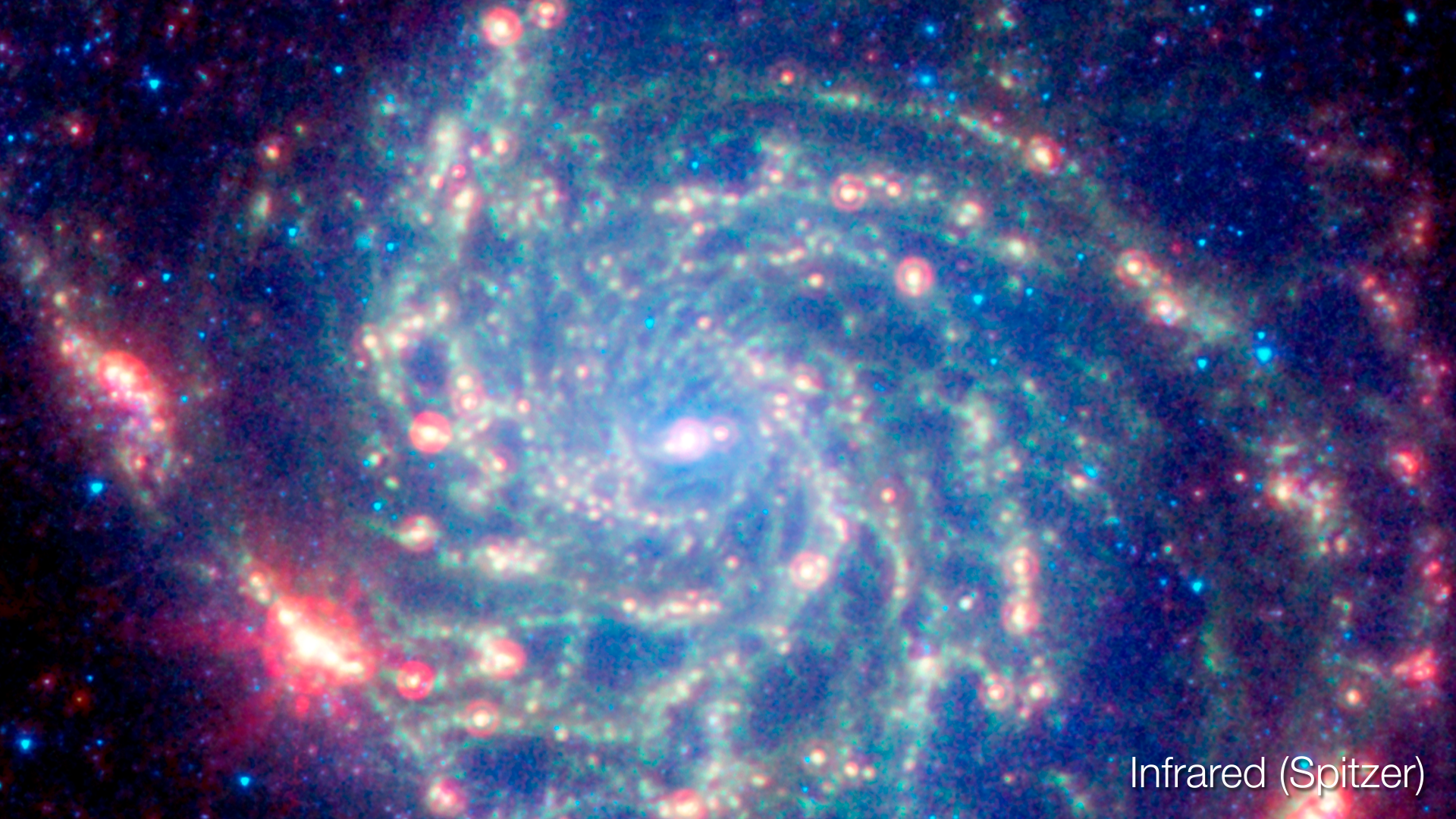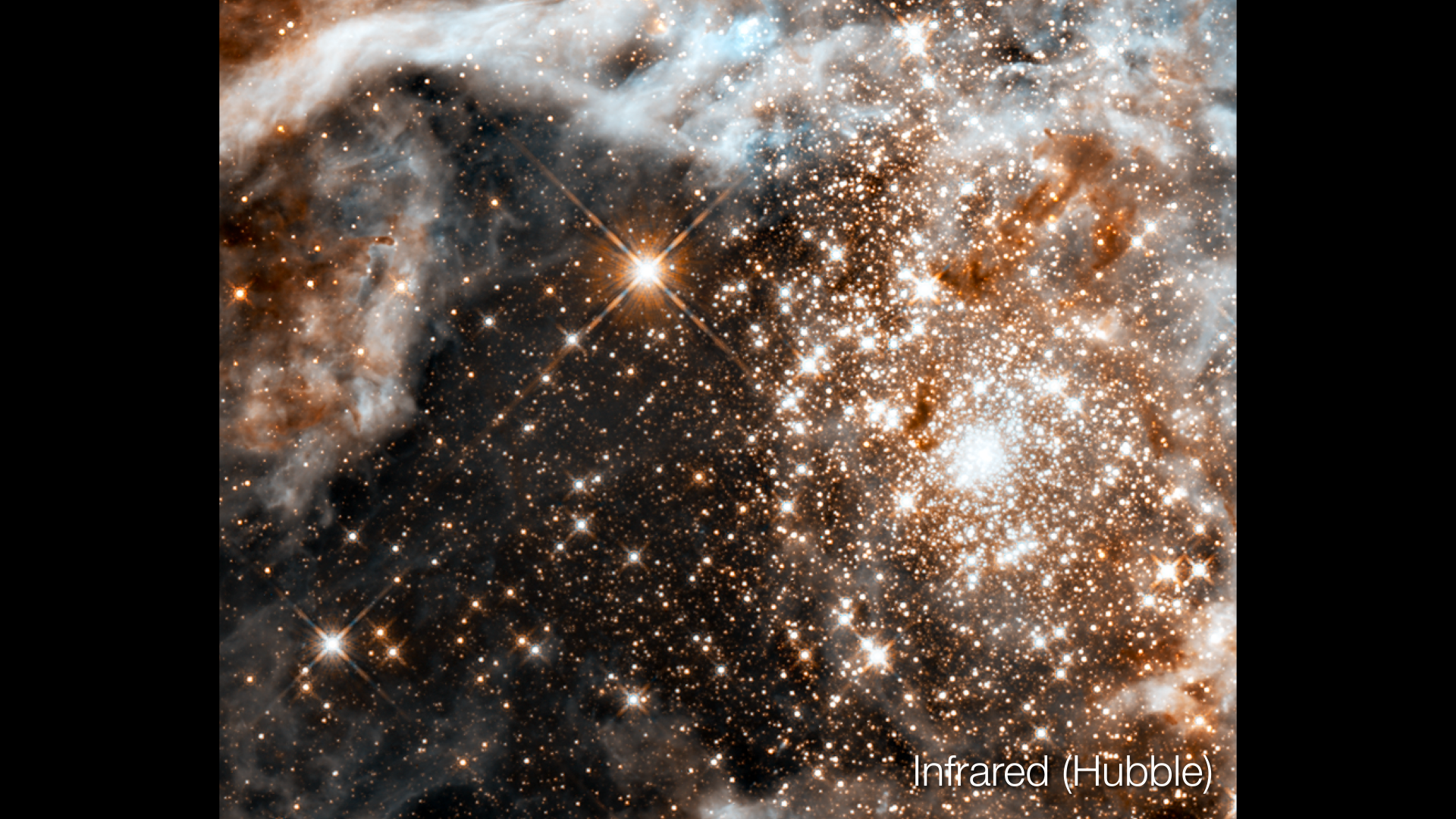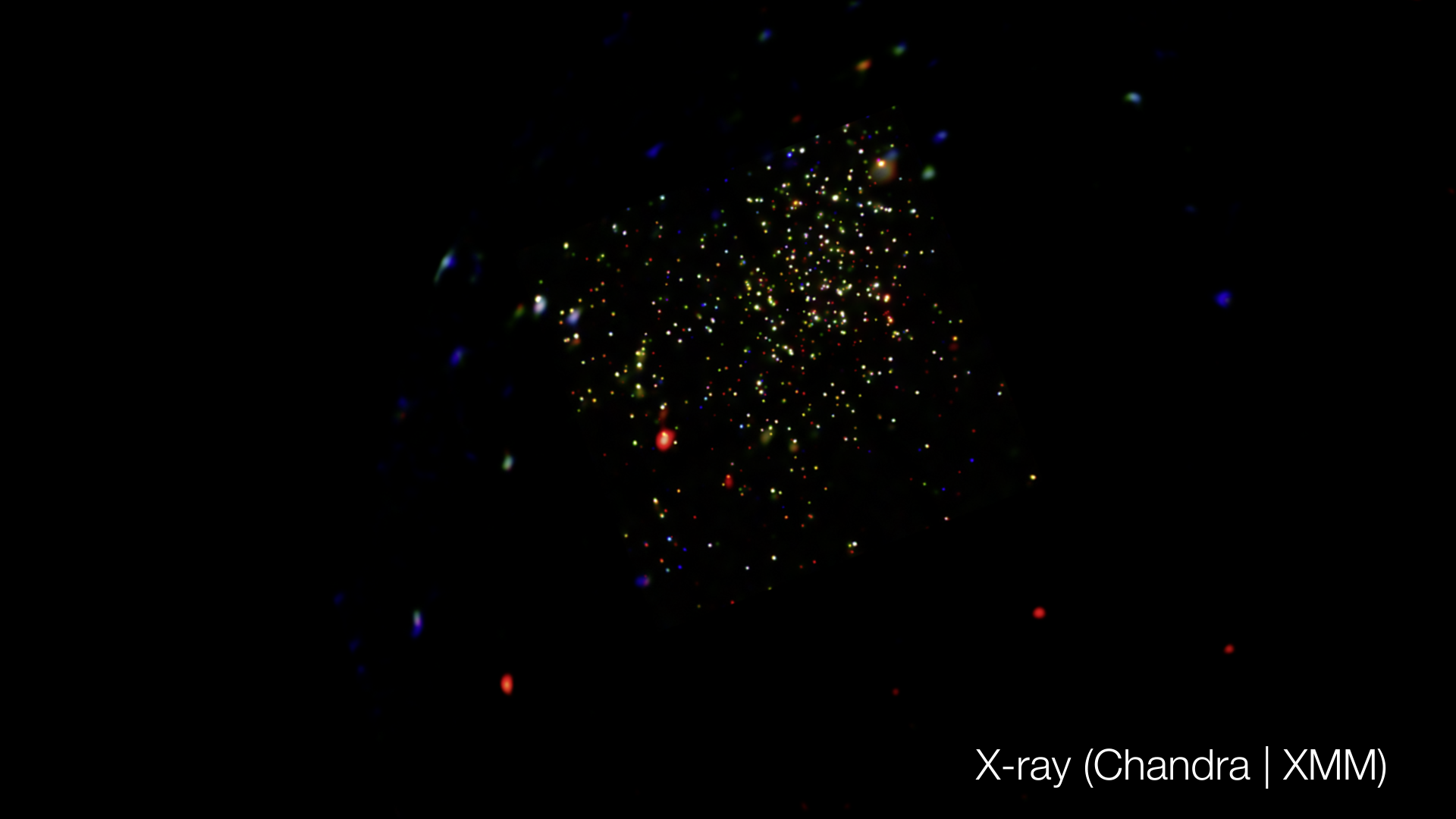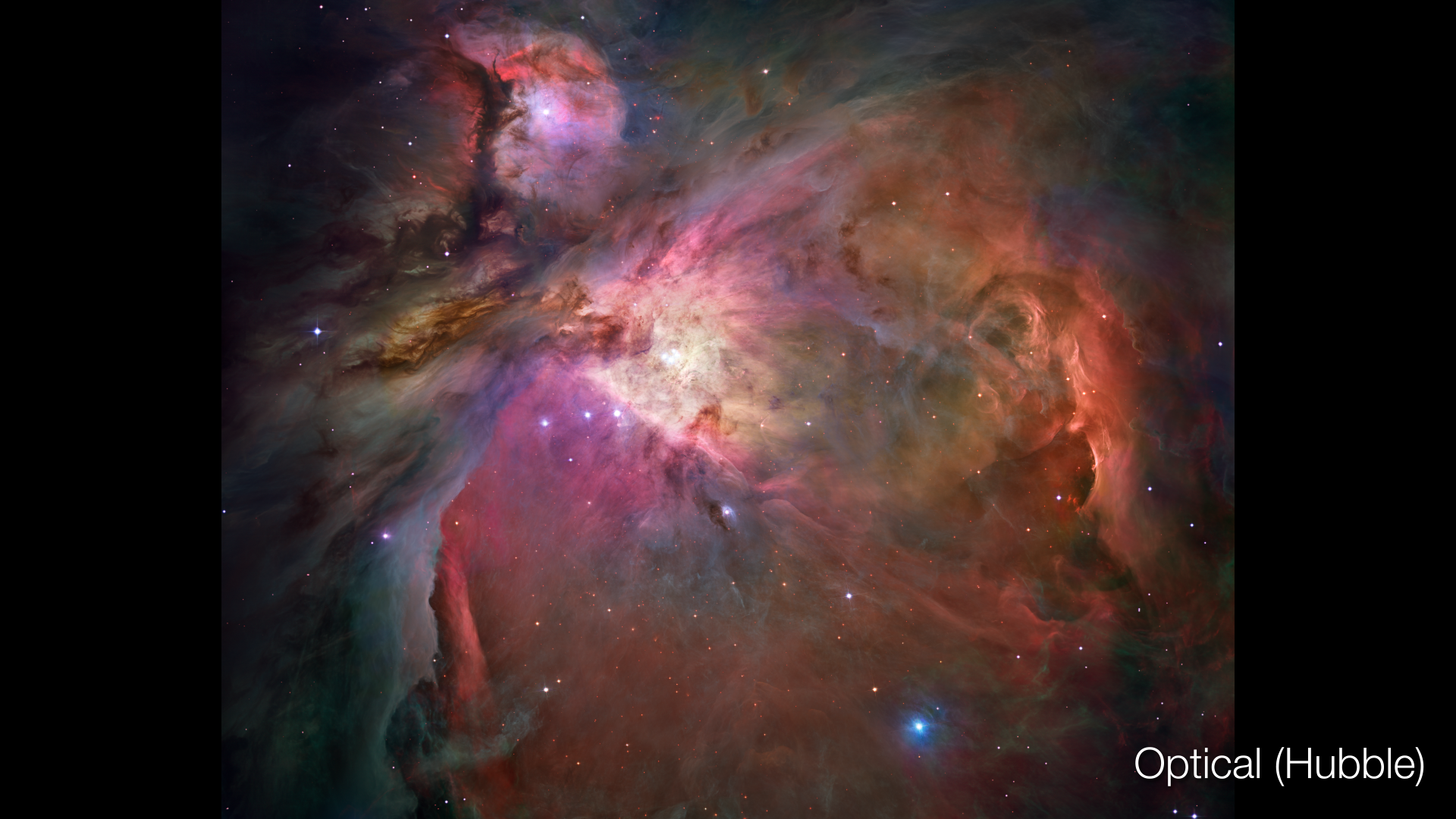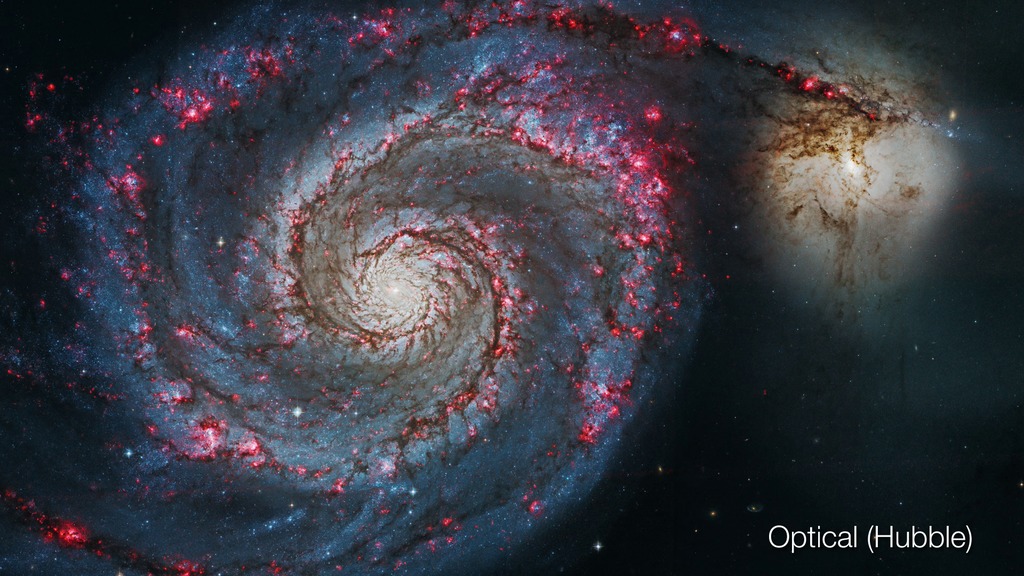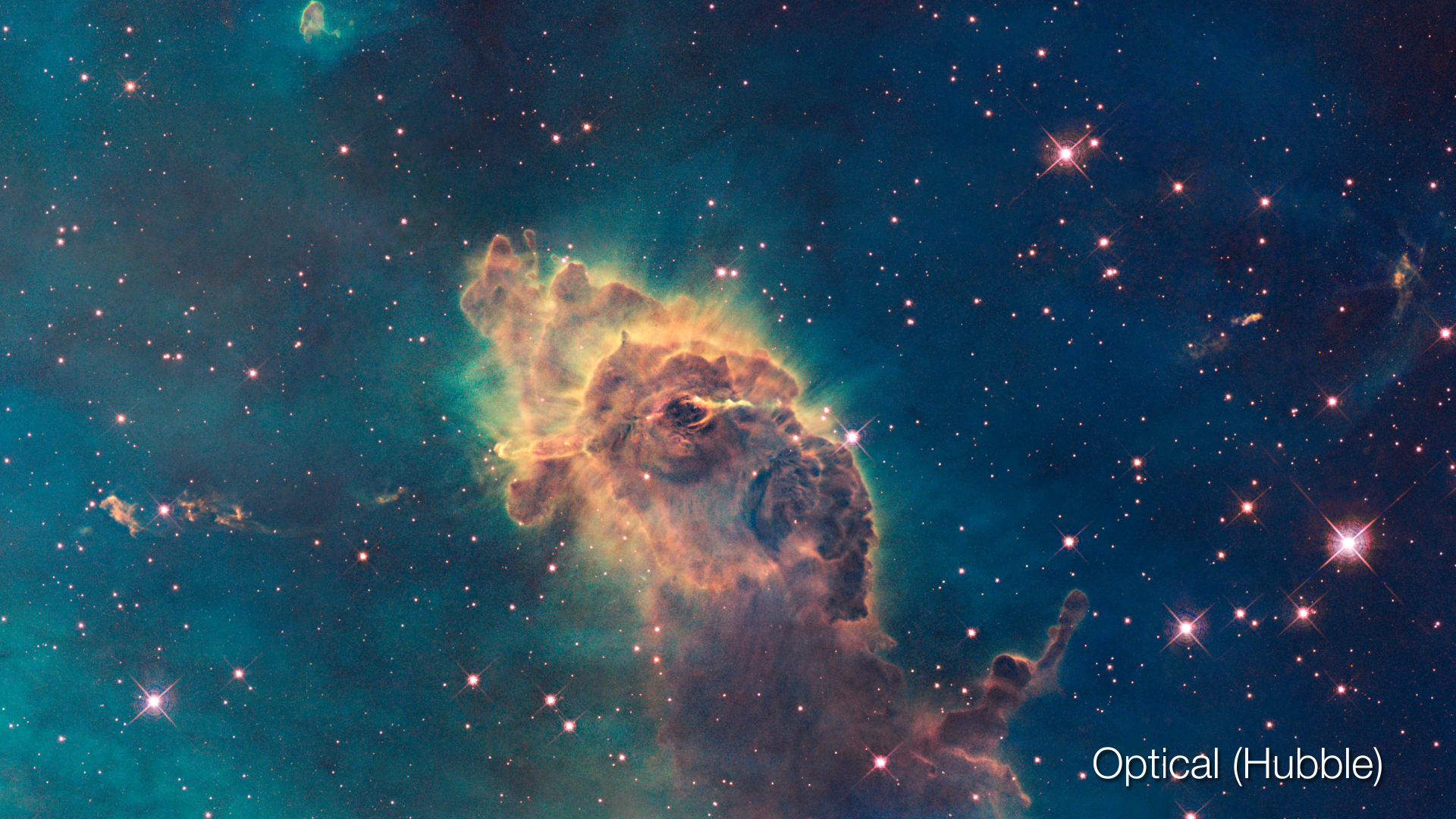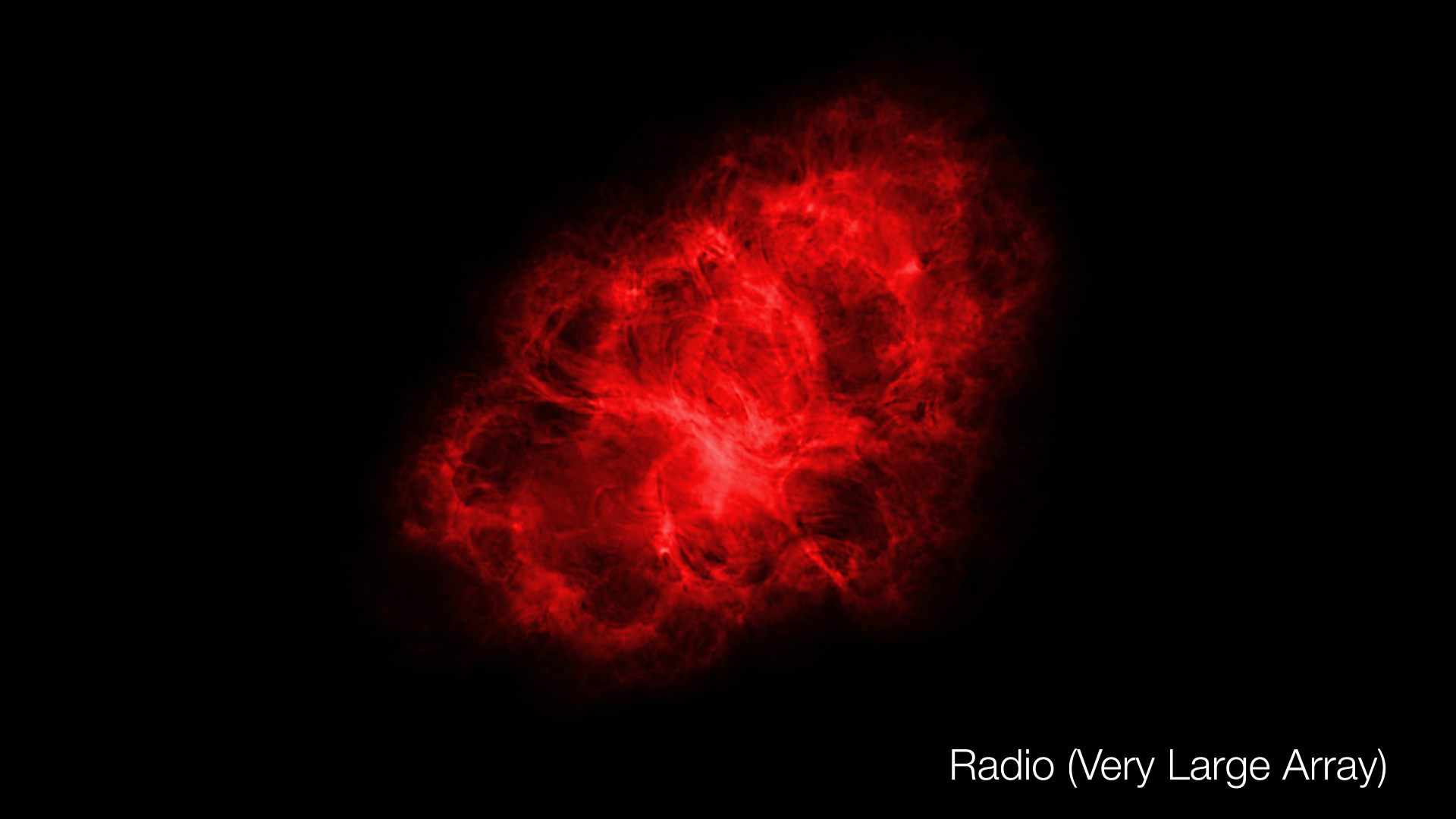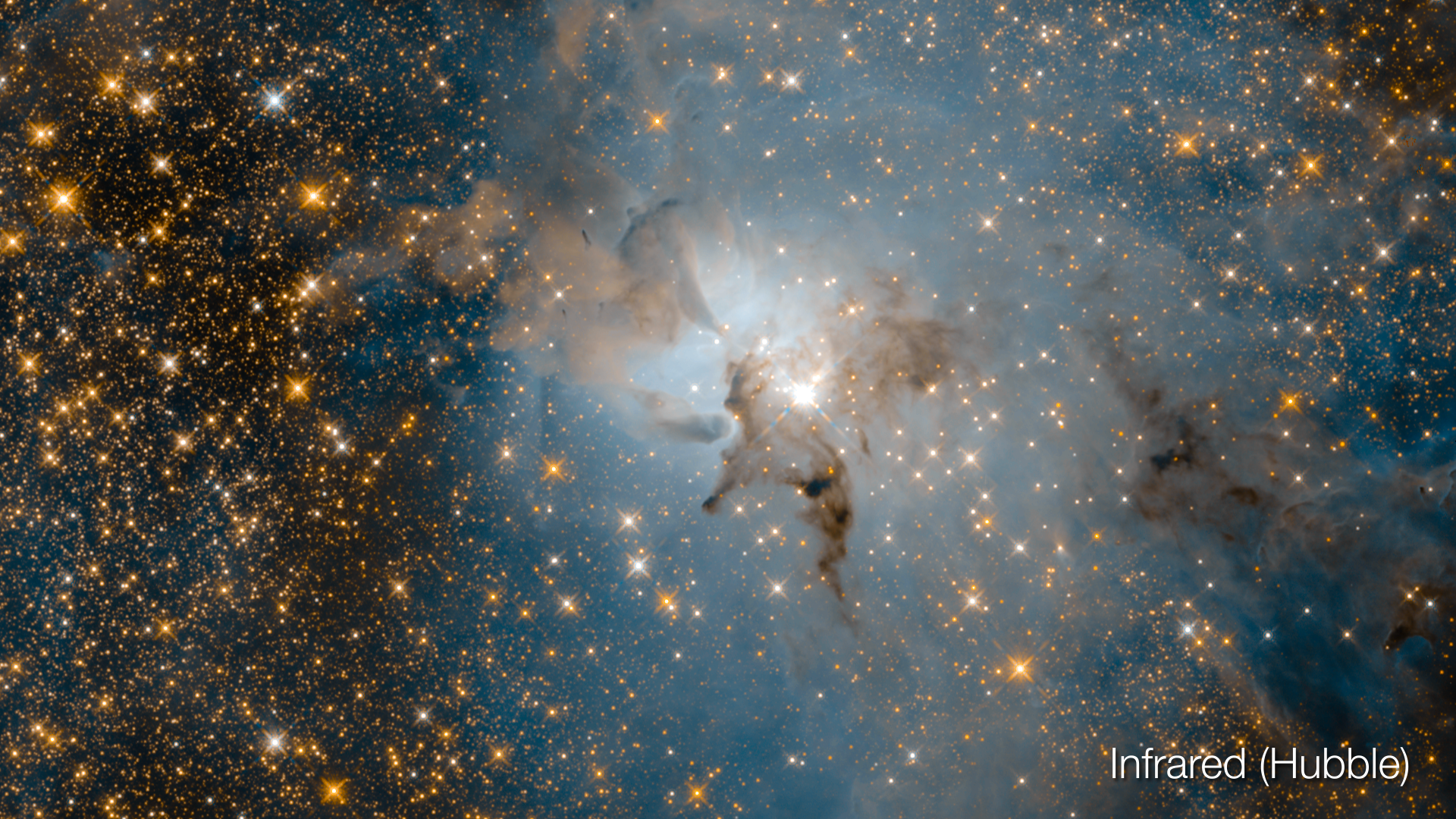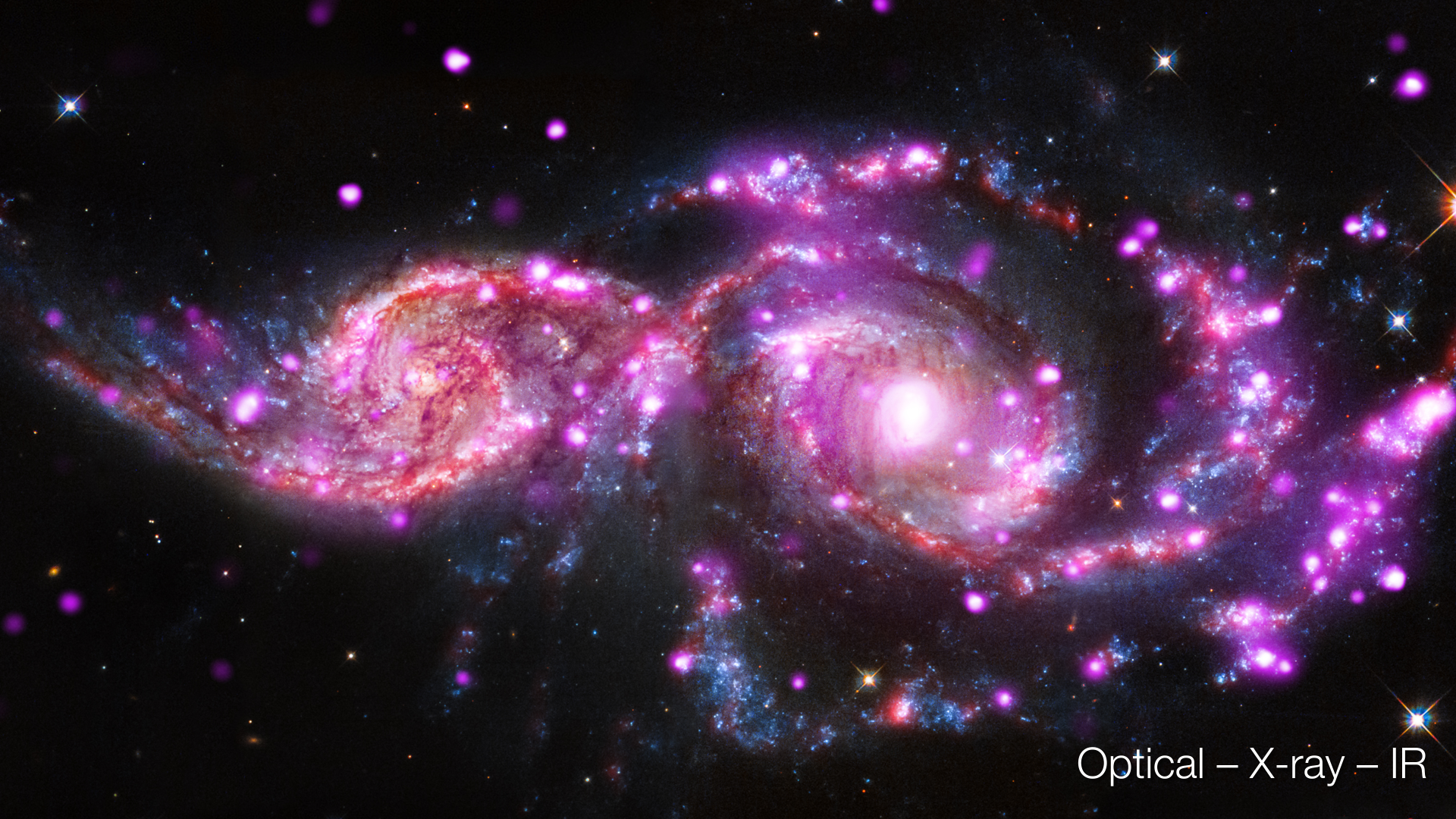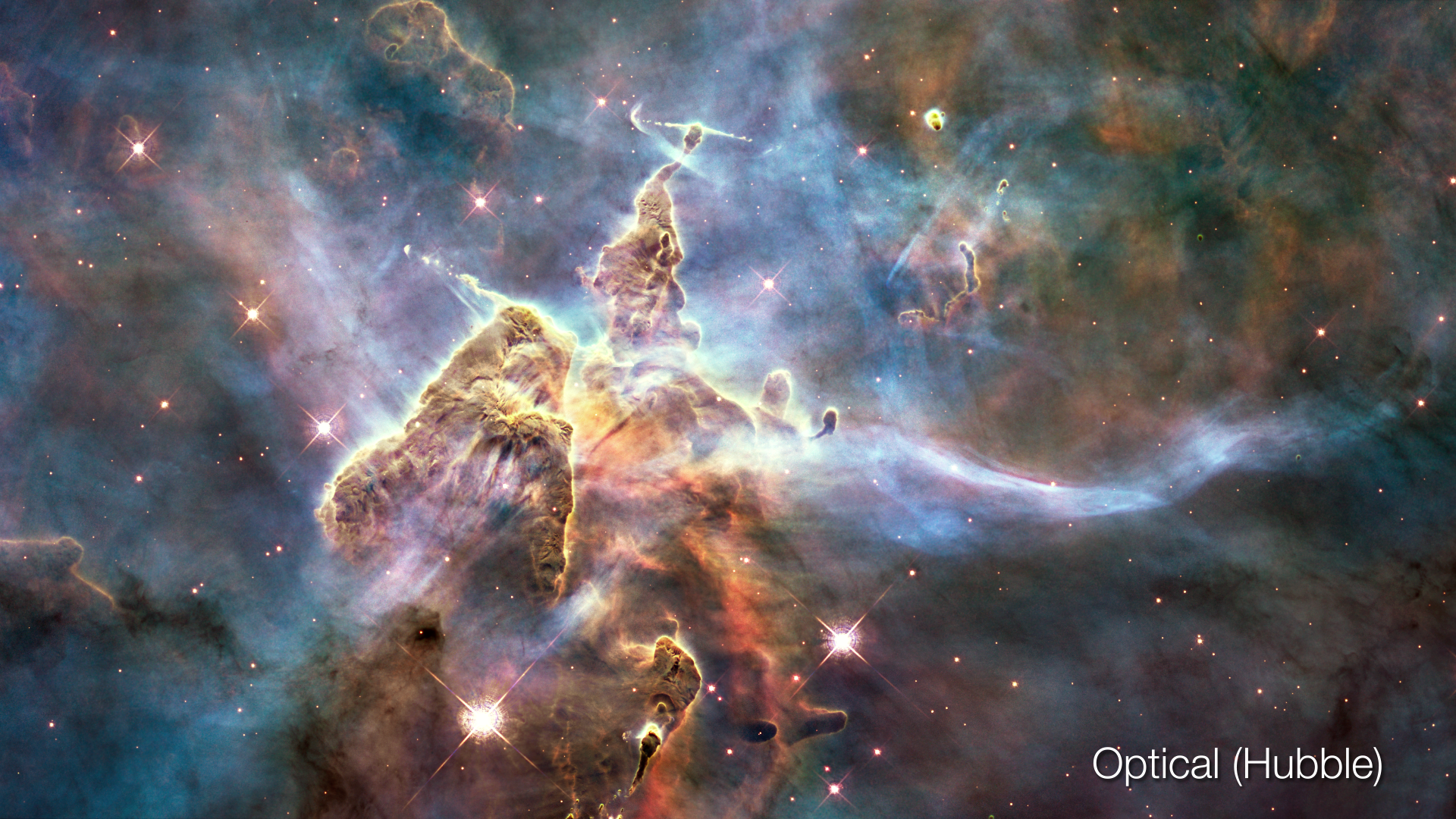Galactic Center in Multiple Infrared Wavelengths
The densely packed starfields at our galaxy's center are hidden behind dust clouds and only become visible in infrared light.
The densely packed starfields at our galaxy's center are hidden behind dust clouds and only become visible in infrared light. In the near-infrared they begin to appear, but are reddened for much the same reason that sunlight turns red when filtered through a smoky cloud. The dense dust clouds begin to stand out at longer infrared wavelengths, taking on changing rainbows of color depending on which parts of the spectrum contribute to the image. The very coldest, densest dust will only start to glow at the very longest wavelengths of light, rendered in red in the far-infrared image in this sequence.
Far-infrared: At these long infrared wavelengths, the hottest dust glows blue, while the coldest is red.
Mid-infrared: Some of the hottest dust clouds begin to glow as one looks deeper into the infrared spectrum.
Near-infrared: The myriad stars and shadows caused by dust clouds are more vivid at shorter wavelengths of light.
This animation is the same as above, played twice as fast.

Far-infrared image of Galactic Center
At these long infrared wavelengths, the hottest dust glows blue, while the coldest is red.

Mid-infrared image of Galactic Center
Some of the hottest dust clouds begin to glow as one looks deeper into the infrared spectrum.

Near-infrared image of Galactic Center
The myriad stars and shadows caused by dust clouds are more vivid at shorter wavelengths of light.
Credits
Please give credit for this item to:
Video: NASA, ESA, and G. Bacon (STScI)
Image Credits:
- Far-Infrared: ESA, NASA, JPL-Caltech
- Mid-Infrared: NASA, JPL-Caltech
- Near-Infrared: NASA, JPL-Caltech/S. Stolovy (Spitzer Science Center)
-
Visualizer
- Greg Bacon (STScI)
-
Image processing
- Susan Stolovy (NASA/JPL CalTech)
-
Technical support
- Leann Johnson (Global Science and Technology, Inc.)
Release date
This page was originally published on Monday, October 1, 2018.
This page was last updated on Monday, March 10, 2025 at 12:26 AM EDT.
Missions
This page is related to the following missions:Datasets used
-
[Spitzer Space Telescope]
ID: 690This dataset can be found at: http://www.spitzer.caltech.edu/
See all pages that use this dataset
Note: While we identify the data sets used on this page, we do not store any further details, nor the data sets themselves on our site.
